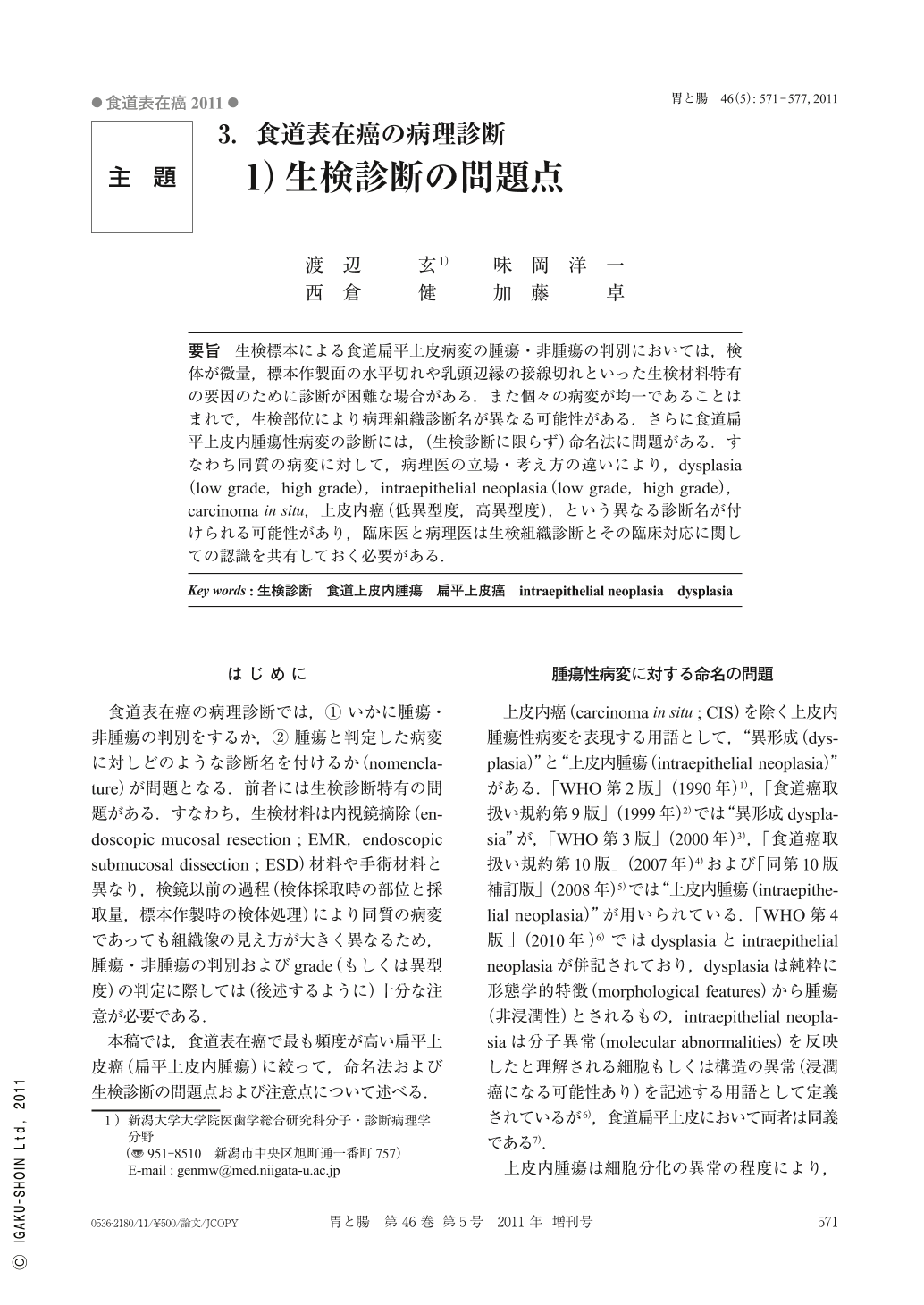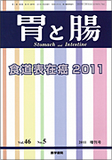Japanese
English
- 有料閲覧
- Abstract 文献概要
- 1ページ目 Look Inside
- 参考文献 Reference
- サイト内被引用 Cited by
要旨 生検標本による食道扁平上皮病変の腫瘍・非腫瘍の判別においては,検体が微量,標本作製面の水平切れや乳頭辺縁の接線切れといった生検材料特有の要因のために診断が困難な場合がある.また個々の病変が均一であることはまれで,生検部位により病理組織診断名が異なる可能性がある.さらに食道扁平上皮内腫瘍性病変の診断には,(生検診断に限らず)命名法に問題がある.すなわち同質の病変に対して,病理医の立場・考え方の違いにより,dysplasia(low grade,high grade),intraepithelial neoplasia(low grade,high grade),carcinoma in situ,上皮内癌(低異型度,高異型度),という異なる診断名が付けられる可能性があり,臨床医と病理医は生検組織診断とその臨床対応に関しての認識を共有しておく必要がある.
We may have difficulties in making a diagnosis as to whether esophageal squamous epithelium taken by biopsy is intraepithelial neoplasia or not in cases where the biopsy specimen is tiny, the cutting face of the HE section is parallel to the mucosal surface, or the cutting face is tangent to papillae of the squamous epithelium. Biopsy specimens from different sites of a lesion could lead to different diagnosis because of the histologic heterogeneity of the lesion. Moreover, different philosophies of pathologists cause problems about nomenclature in the histologic diagnosis of esophageal squamous neoplasia. The same lesion could have different names including dysplasia(low grade, high grade), intraepithelial neoplasia(low grade, high grade), and carcinoma in situ. Clinicians and pathologists should have consensus about treatment policies based on the histologic diagnosis of squamous lesions.

Copyright © 2011, Igaku-Shoin Ltd. All rights reserved.


